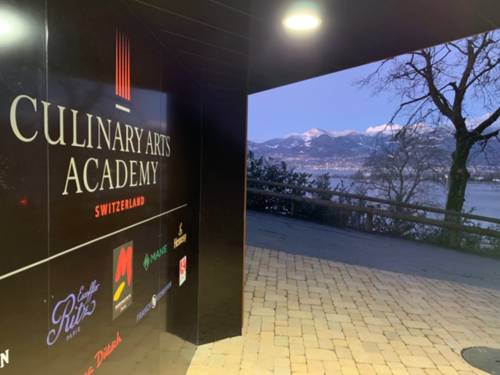
FAQ About The Evolution of Culinary Arts as Cultural Expression

What is the relationship between culinary arts and cultural identity?
Culinary arts are deeply intertwined with cultural identity as they represent the traditional values, beliefs, and heritage of a community. The foods people consume and the manner in which they are prepared and shared are reflections of their history, geography, and social customs. These culinary traditions are often passed down through generations, serving as a means of communication and expression within a culture.

How have culinary arts evolved over time?
The evolution of culinary arts is a result of a myriad of factors including globalization, technological advancements, and cultural exchanges. Traditional recipes have been adapted to accommodate new ingredients and methods, while fusion cuisines have emerged by combining elements from different culinary traditions. This evolution reflects changing cultural influences and societal changes, shaping and redefining culinary practices.

What are fusion cuisines and how do they impact cultural expression?
Fusion cuisines are culinary practices that blend elements from different cultural traditions. They often result from globalization and the exchange of culinary practices worldwide. Fusion cuisines can introduce novel flavors and techniques, challenging traditional food norms and contributing to the dynamic narrative of cultural expression through food.

Can you give examples of how food has been used as a tool for cultural exchange?
Food has played a significant role in cultural exchange throughout history. For example, the introduction of spices from the East to European countries during the Spice Trade significantly altered European culinary practices. Similarly, the integration of Native American ingredients like corn and tomatoes into European diets is another instance of culinary and cultural exchange.

Why is traditional cuisine important to cultural heritage?
Traditional cuisine is vital to cultural heritage as it embodies the history, values, and lifestyles of a community. It strengthens cultural identity and provides a sense of belonging by connecting people to their ancestors and their traditional ways of life. Preserving traditional foods ensures the continuation of cultural stories and practices for future generations.

How do globalization and migration influence culinary arts?
Globalization and migration have a profound impact on culinary arts by introducing new ingredients and cooking methods from different parts of the world. This leads to culinary innovation and the development of new fusion dishes as people from diverse backgrounds share food practices. However, it also poses challenges to maintaining traditional food practices amidst these influences.

What role do culinary trends play in reflecting social change?
Culinary trends often reflect broader social changes, mirroring shifts in values, concerns, and technological advancements. For instance, the rise of plant-based diets correlates with increased awareness of health and environmental issues. Similarly, the popularity of farm-to-table dining ties into growing interests in sustainability and local food sourcing.

How does culinary tourism contribute to cultural understanding?
Culinary tourism involves traveling to experience the food of a particular culture, often leading to greater cultural appreciation and understanding. Tourists engage directly with local food practices, traditions, and values. This type of tourism can foster cultural exchange and promote the preservation of traditional foods.

What are the potential downsides of culinary fusion?
While culinary fusion can lead to exciting new flavors and dishes, it may also lead to cultural appropriation and the dilution of traditional culinary practices. Fusion can sometimes overshadow classic dishes and erode specific cultural identities, especially if not done respectfully.

In what ways do chefs contribute to cultural narratives through food?
Chefs contribute to cultural narratives by curating menus and dishes that tell stories of their heritage, experiences, and cultural influences. Through creative innovation and interpretation of traditional recipes, chefs can make cultural statements and invite diners to engage with different cultural perspectives through flavors and ingredients.

What is the significance of food rituals in cultural traditions?
Food rituals are significant in cultural traditions as they often mark important events such as religious ceremonies, celebrations, and family gatherings. These rituals help preserve traditions, reinforce cultural identity, and foster a sense of community by bringing people together around shared meals and customs.

How does the media influence the culinary arts and cultural expression?
The media plays a crucial role in influencing culinary arts and cultural expression by providing a platform for sharing culinary ideas, techniques, and trends. Shows, blogs, and social networks spread knowledge about different cuisines, thus shaping public perceptions and encouraging the exploration and fusion of cultural foods.

Are there examples of cuisine that have successfully merged different cultures?
Yes, cuisines like Tex-Mex and Peruvian-Japanese (Nikkei) are successful examples of culinary fusion that have productively merged different cultural elements. Tex-Mex combines Mexican and American culinary traditions, while Nikkei cuisine results from Japanese influence on Peruvian culinary practices, creating unique and popular dishes.

What role do local ingredients play in defining a region's cuisine?
Local ingredients are fundamental in defining a region's cuisine as they reflect the climate, geography, and agricultural practices of an area. Such ingredients form the foundation of regional culinary practices, distinguishing local dishes and contributing to the uniqueness of a cultural food identity.

How can culinary arts be used to preserve endangered languages and cultures?
Culinary arts can help preserve endangered languages and cultures by maintaining traditional recipes and food practices that are integral to cultural identity. By documenting and passing down these practices, communities can keep their languages and cultures alive and vibrant, even in the face of globalization pressures.

What impact do food festivals have on cultural expression and preservation?
Food festivals celebrate the culinary traditions of cultures and promote cultural expression and preservation. They showcase traditional dishes, provide a venue for cultural exchange, and educate participants about the history behind the foods, fostering awareness and appreciation of cultural diversity.

How does industrialization affect traditional food practices?
Industrialization affects traditional food practices by introducing mass production techniques, which often replace hand-crafted methods. This can lead to the loss of artisanal skills, flavors, and recipes. However, it also increases accessibility to diverse foods, allowing traditional practices to reach a broader audience.

What is the importance of storytelling in culinary arts?
Storytelling in culinary arts is important as it adds depth to the dining experience, connecting diners to the cultural and historical context of the food. It helps convey the origins, traditions, and personal connections involved in creating dishes, enhancing cultural appreciation and understanding.

Why might some cultures resist culinary fusion?
Some cultures might resist culinary fusion to preserve their traditional culinary practices and maintain a strong cultural identity. Culinary fusion can sometimes dilute or overshadow traditional practices, leading to concerns about losing cultural uniqueness and authenticity.

How do economic factors influence culinary expression and development?
Economic factors have a significant influence on culinary expression and development. The availability of ingredients, affordability, and economic stability of a region can dictate culinary practices. Economic factors can drive innovation, as seen in the creation of affordable, yet creative fusion dishes during times of economic hardship.
